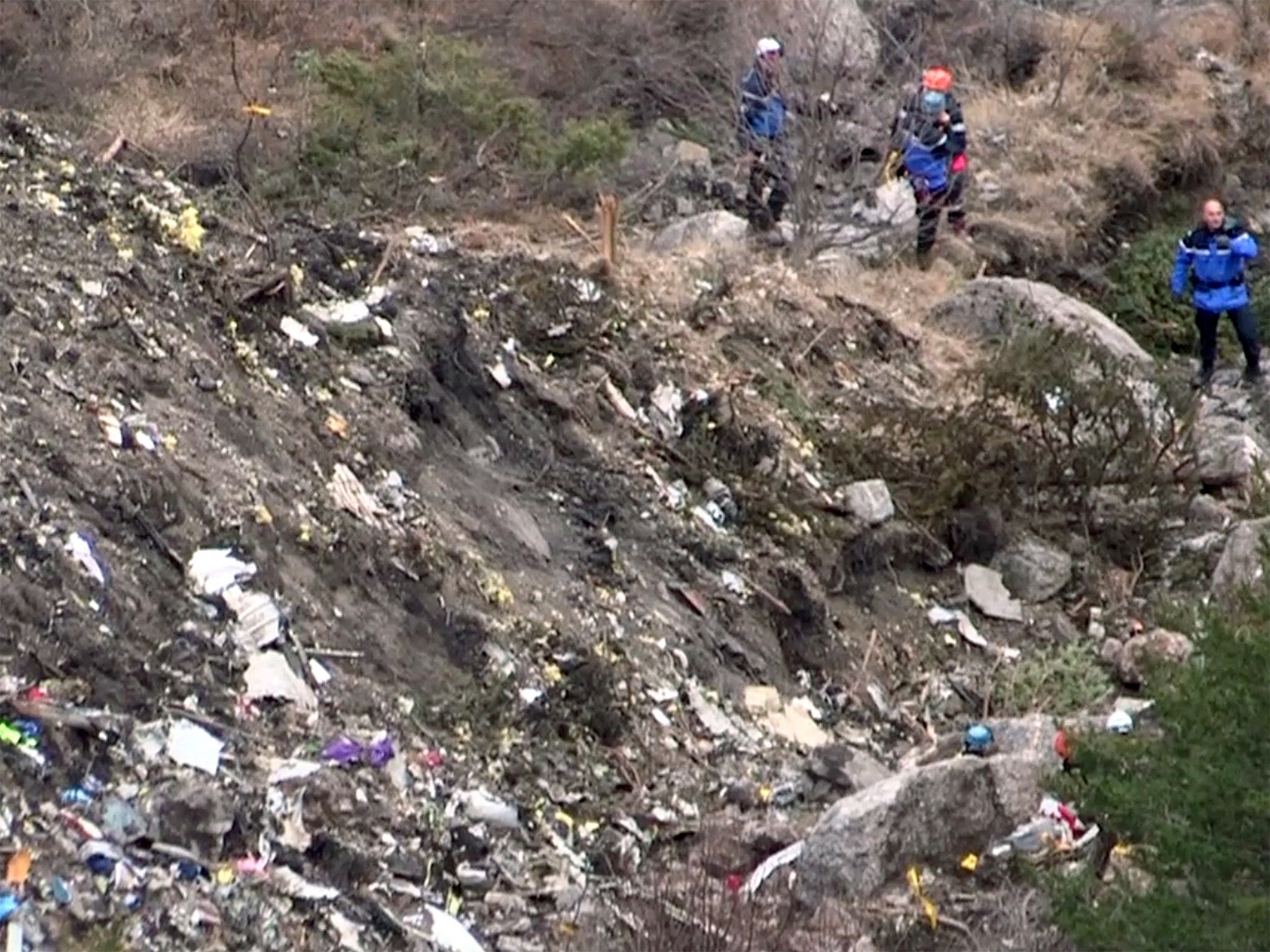Germanwings plane crash: Airbus A320 glide to destruction 'took 18 minutes not 8'
French officials say events 'between 10.30am and 10.31am' will prove 'crucial' to discovering what went wrong

Your support helps us to tell the story
From reproductive rights to climate change to Big Tech, The Independent is on the ground when the story is developing. Whether it's investigating the financials of Elon Musk's pro-Trump PAC or producing our latest documentary, 'The A Word', which shines a light on the American women fighting for reproductive rights, we know how important it is to parse out the facts from the messaging.
At such a critical moment in US history, we need reporters on the ground. Your donation allows us to keep sending journalists to speak to both sides of the story.
The Independent is trusted by Americans across the entire political spectrum. And unlike many other quality news outlets, we choose not to lock Americans out of our reporting and analysis with paywalls. We believe quality journalism should be available to everyone, paid for by those who can afford it.
Your support makes all the difference.Evidence emerged today that the unexplained, gradual dive to destruction of Germanwings Flight 9525 took at least 18 minutes, not eight.
The French environment and transport minister, Ségolène Royal, said that the crew of the Airbus A320 had stopped responding on radio at 10.30am yesterday when the aircraft was over the Mediterranean.
The aircraft slammed into the sheer side of a mountain in the French Alps soon after 10.48am. For those 18 minutes, it gradually shed height from 28,000 feet to less than 2,000 feet without transmitting any form of distress signal.
Ms Royal said that events in the cockpit of the plane “between 10.30am and 10.31am” were “crucial” and may hold the “key” to the mystery of the air disaster which killed 150 people.
Solving that mystery will depend on the two flight recorders aboard the aircraft. One of those boxes – the cockpit voice recorder – arrived in the laboratories of the French air investigation bureau, the BEA, at Le Bourget near Paris this morning.
The French interior minister, Bernard Cazeneuve, said that so-called “black box” had been damaged in the crash but was “usable”. Other officials said that the extent of the damage would decide whether the mystery of the crash could be solved “within hours or in days”.
If the voices of the pilots are still distinguishable, sources said, it may be easy for the investigators to discover what went wrong. If they are not distinguishable, they will have to work from the garbled sounds that remain.
The accident investigation bureau is expected to announce its first findings today at a press conference at 4pm Paris time (3pm GMT).
Ms Royal said that all possible explanations for the crash remained open but that, at this stage, the assumption was that the disaster was an accident rather than an act of terrorism.
Radar logs of the Barcelona to Dusselfdorf flight show that at 10.29am yesterday, it was at its cruising height of 28.524 feet over the Mediterranean. At 10.30am it had dropped to 26,453 feet. One minute later, it was at 24,380 feet.
For the next 17 minutes, it shed around 1,000 feet of height a minute – a gradual glide downwards rather than a dive. The plane vanished from radar contact soon after 10.48am and is believed to have crashed a few minutes later.
Ms Royal confirmed this morning that, soon after 10.30am, when the pilots had stopped responding by radio, the French military scrambled a Mirage jet fighter to investigate. This aircraft was seen by eye-witnesses following the doomed airliner as it skimmed the Alpine ridges before crashing into a sheer mountain-side. The pilot of the Mirage could, therefore, also possess crucial information on the Germanwings aircraft's behaviour.
The Cockpit Voice Recorder or CVR, located by its location beacon at the crash site yesterday afternoon, records the conversations of the pilot and co-pilot. It also records any alarm signals that may have rung and the sound of the engines.
The other black-box, the Fight Data Recorer or FDR, is still missing. It records second by second all the movements of the plane – height, speed,trajectory – and the performance of the engines and other key equipment.
Join our commenting forum
Join thought-provoking conversations, follow other Independent readers and see their replies
Comments